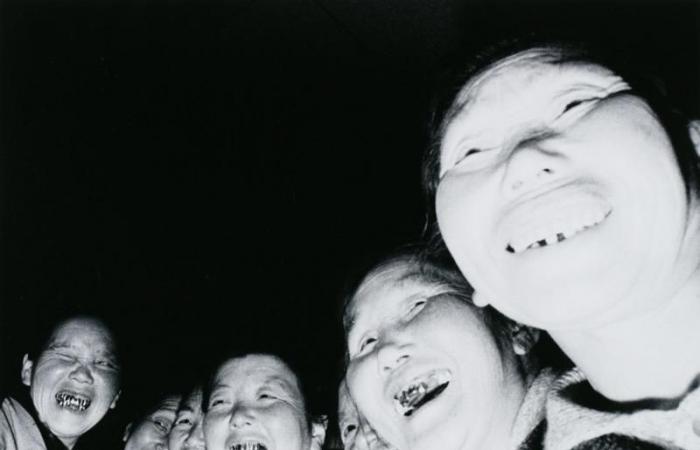Fifty years ago, MoMA presented the “New Japanese Photography” exhibition. The T3 Photo Festival Tokyo celebrates this legendary exhibition, which opened up a much broader understanding of post-war Japanese photography.
Yasuhiro Ishimoto (1921–2012), Shomei Tomatsu (1930–2012), Kikuji Kawada (1933–), Masatoshi Naito (1938–), Hiromi Tsuchida (1939–), Masahisa Fukase (1934–2012), Ikko Narahara (1931– 2020), Eikoh Hosoe (1933–), Ken Ohara (1942–), Shigeru Tamura (1947–), and Bishin Jumonji (1947–).
Invited by John Szarkowski, director of the photography department of the MoMA Photography Department and the Japanese critic Shoji Yamagishi, these fifteen photographers, all men, embodied the present of Japanese photography in 1974. With more than two hundred works exhibited, all produced between 1950 and 1973, it bore witness to the diversity of practices in post-war Japan supported by a reconstructed economy, following the example of the first photographic firms flooding the international market. She spoke of the sticky attraction to the underworld of Daido Moriyama, the geometric aesthetic of Ken Domon or even the already captivating blurs of Shomei Tomatsu.
The exhibition had a significant impact in the United States and in Europe. Not only was it the first exhibition bringing together Japanese photographers outside their country, but it inspired many Western photographers and strengthened the careers of some, like Daido Moriyama. Finally, it anchored the importance of photographic publishing in the dissemination of a work, unlike Western photographers preferring the exhibition format.
In Japan, the exhibition allowed, like a boomerang, its society to consider a photographic art that had until then been neglected or despised. It enlightened consciences. It was an introduction to contemporary Japanese photography. Nevertheless, like any attempt at bringing together, like any gesture of synthesis, the MoMA exhibition presented some shortcomings, starting with the absence of women artists and the forgetting of glaring figures after the fact.
« New Japanese Photography » was also the first stone of a series of exhibitions devoted to significant figures of Japanese art. In some ways, the MoMA exhibition modeled a topos of the photographic exhibition, that of the review. Subsequently, exhibitions in the United States as well as in Japan, even in France, regularly sought to show the state of photographic art in Japan and to bring together under the same banner, despite sometimes different aesthetics and approaches, generations of artists. In 2008, there was the exhibition “Heavy Light: Recent Photography and Video from Japan” at the ICP; in 2015; “Another Language. Eight Japanese Photographers” at the Rencontres d’Arles, the same year; “Japanese Photography from Postwar to Now” at SFMoMA and “Provoke” in 2016. The exhibition also gave rise to major photographic acquisition campaigns in museums, like the MoMA of course but also the SFMoMA or the MFA Boston.
As another tribute to this now historic exhibition, the festival offers a rereading of the works of the fifteen photographers shown in New York in very large prints, in projections or in prints on materials, technologies then impossible at the time. Thus Tomatsu’s demonstration photos are attached to a porcelain panel while Bishin Jumonji moves from photosensitive paper to hemp fabric.
On the other hand, the festival also offers a review of contemporary Japanese photography from 1974 to 2024, with the works of Sayaka Uehara, Misun Gang, Motoyuki Shitamichi, Mayumi Hosokura, Kohei Fukushima, Shingo Kanagwa and Natsuki Kuroda. A necessarily fragmentary review, which is in line with the MoMA exhibition through its openness and the relevance of its artistic choices.
More information:






